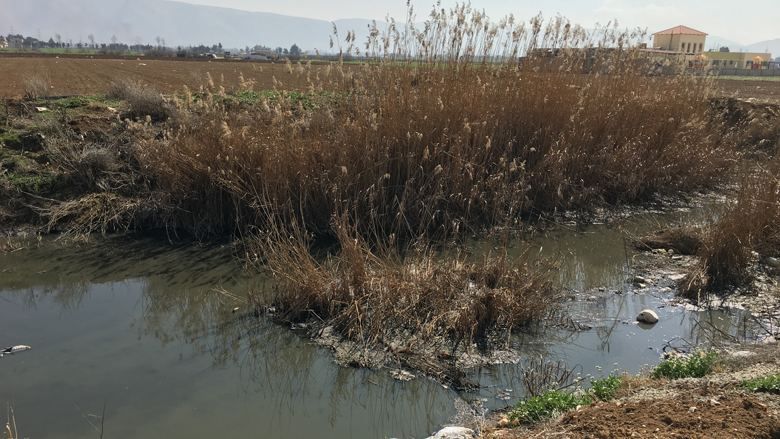Lake Qaraoun in Lebanon is a pivotal water body in a country rich with rain and snow fall yet deseparately weak in the management of these resources.
The Qaraoun dam was constructed in 1959 to produce hydropower and provide water for irrigation. The dam was built on the Litani river, the country’s principal water artery. The Qaraoun Lake is the largest artificial lake in Lebanon and has a capacity to hold about 220 million cubic meters of water. The lake’s water irrigates about 30 percent of the country’s irrigated land.
Due to years of neglect, large stretches of the Litani river and the Qaraoun Lake have become highly polluted. This pollution poses a threat to public health and has resulted in major economic and environmental losses. The main sources of pollution are apalling, and can be summarized as: untreated municipal and industrial wastewater as well as dumping of solid waste along the river banks. In a context where agriculture dominates the Litani river basin, agricultural chemicals and non-degradable pesticides constitute another major source of river pollution.
“We are facing a very dire situation,” says Maroun Moussallem, Director General of the Bekaa Water Establishment.
“We have less water available but demand keeps growing. This is not sustainable.” Moussalem explains that on the one hand drought conditions in recent years due to lower precipitation have decreased water availability, while on the other hand the unprecedent number of displaced Syrians in the Bekaa region has increased the demand for water. “In these conditions, we cannot afford to further degrade our water and need to conserve every drop we have,” he said.
The Lebanese government is launching a project with a $55 million loan from the World Bank to reduce the pollution flowing into Lake Qaraoun. This is a first step in a larger effort estimated at US$250 million, according to the Government’s Business Plan for Combating Pollution of the Qaraoun Lake.
“Today millions of cubic meters of raw sewage flow directly into the Litani river. The project will construct sewage networks and connect them to wastewater treatment plants (such as Zahlé) so that sewage gets treated before it is discharged in the Litani. That way, not only we reduce the pollution entering the river but make treated water available for irrigation” explains Maria Sarraf, World Bank Lead Environment Specialist and Project Team Leader. “This is part of Lebanon’s National Strategy for the Wastewater Sector which aims at increasing wastewater collection, treatment and the reuse of treated water.”
The project also aims to decrease pollution from agricultural chemicals and pesticides by promoting reduced use of fertilizer and integrated pest management practices among large farmers located close to the Litani River. In addition, the project will fund cleanup campaigns to remove garbage that has been dumped into the Lake.
“The active involvement of all members of the Qaraoun committee has been instrumental in advocating for cleaning up the pollution in Lake Qaraoun” indicates Manal Moussallem, Senior Environmental Advisor at the Ministry of Environment. The committee brings together representatives from ministries, agencies and municipalities to seek solutions and funding to implement the Qaraoun Business Plan.

